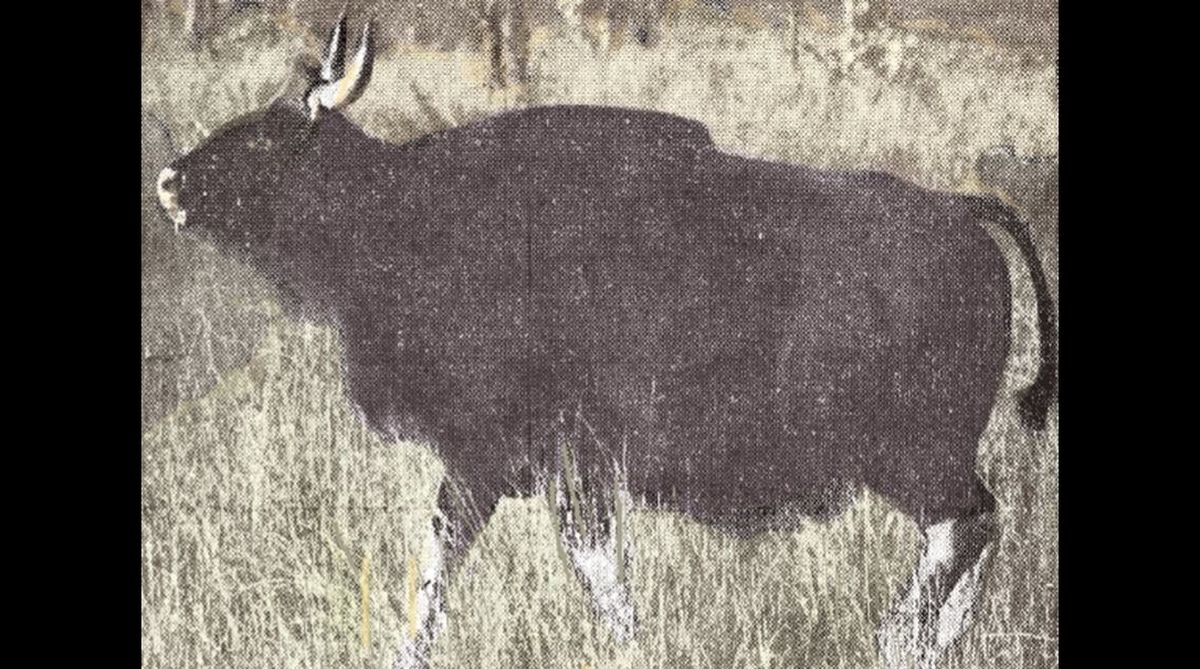MP: 19 swamp deer brought from Kanha National Park released in Bandhavgarh Tiger Reserve
The 11 male and 8 female deer were brought in a special truck from the Kanha National Park which is around 200 kilometres away from the tiger reserve.
Kahna offers exceptional amenities to a herbivore that is mainly a grazer like the gaur, for the rolling maidans offer it excellent pastures.

(Photo: SNS)
Over many seasons of observation of gaur in the Mudumalai Sanctuary of Madras, I gained the impression that there are two kinds of them ~ the differences between them are not sufficiently marked for any distinction into subspecies, and they frequent the same forests and are sometimes found together, and both kinds are quite distinct from the wheat-coloured gaur of the Pulneys I noticed this difference between gaur years ago when watching a composite herd of over 50 animals in the Theppakadu area of the Mudumalai Sanctuary; when this composite herd split into two, the smaller and darker cows, with long, black hair on the threat formed a herd, while the larger, lighter brown cows with no long hair on the throat formed another herd; the herd bulls in either herd were big, but the larger of them went with the larger sized cows.
Now this sanctuary, along with the adjoining Bandipur Sanctuary of Mysore, is probably the best area in the world in which to study gaur, and in subsequent years I kept a sharp lookout for the two kinds I had noticed, in the Karudi and Theppakkadu areas of the Mudumalai Sanctuary.
Gradually I felt surer that there were two kinds, and that not environment but heredity (gaur herds are largely family parties and both kinds shared the same territory) was responsible for their differences.
Advertisement
On a visit to the Periyar Sanctuary of Kerala in 1960, I noticed that the gaur herds I saw there were all of the larger, browner kind.
I should make it clear here that the differences between the two kinds is hard to make out in the adult bulls, whether they are herd bulls or lone bulls and that it is in the grown cows that one can discern these differences so hard to put into precise words ~ in the main, it is that in one kind the cows are smaller, much darker, and with long, black hair on the throat, and that usually the horns are not so well developed, and that in the other kind the cows are big, varying in coat from a deep umber to a light raw umber and have better developed horns ~ incidentally, the largest bulls I have seen had a distinct brownness to their black, particularly on the flanks. This is not a difference arising from differences in age, for it is clearest in the adult cows of either kind.
The gaur I saw in the Kanha National Park belonged to the darker and smaller kind. All the cows I saw had long, black hair on the throat ~ I have seen similar, but noticeably smaller cows in the Palamau National Park of Bihar. Although in fine condistion and well developed, the gaur at Kanha (even the biggest bulls) definitely do not attain the size the animals do in the Western Ghats.
Kahna offers exceptional amenities to a herbivore that is mainly a grazer like the gaur, for the rolling maidans offer it excellent pastures. But it is not always that animals follow logic in such matters ~ chital, for example, seem to reach their best development (and are most gregarious) in open jungles and scrub, and not in tree forests where the undershrub is Iush.
At Kanha
I think gaur look their best on open ground. One sees their superb musculature and build to the best advantage in clear lighting against a homogeneous background. At Kanha one can see them in the maidans, and at times in numbers ~ I saw a herd of 27 including the big bull and two calves one evening.
On another occasion I saw three bulls grazing in company on a rise above a nullah. They are more or less of a size (one, the oldest was a shade smaller and the other two almost identical) very black and shiny and all three past their prime.
Incidentally, I believe it is in the darker and smaller kind of gaur that the hair slips with old age in the bulls, the black, shining skin showing through. I have seen big bulls of considerable age in the South whose coats were fully covered with hair ~ the biggest bull I have ever seen was a uniform Vandyke brown all over.
This was published on 4 May 1969.
Advertisement